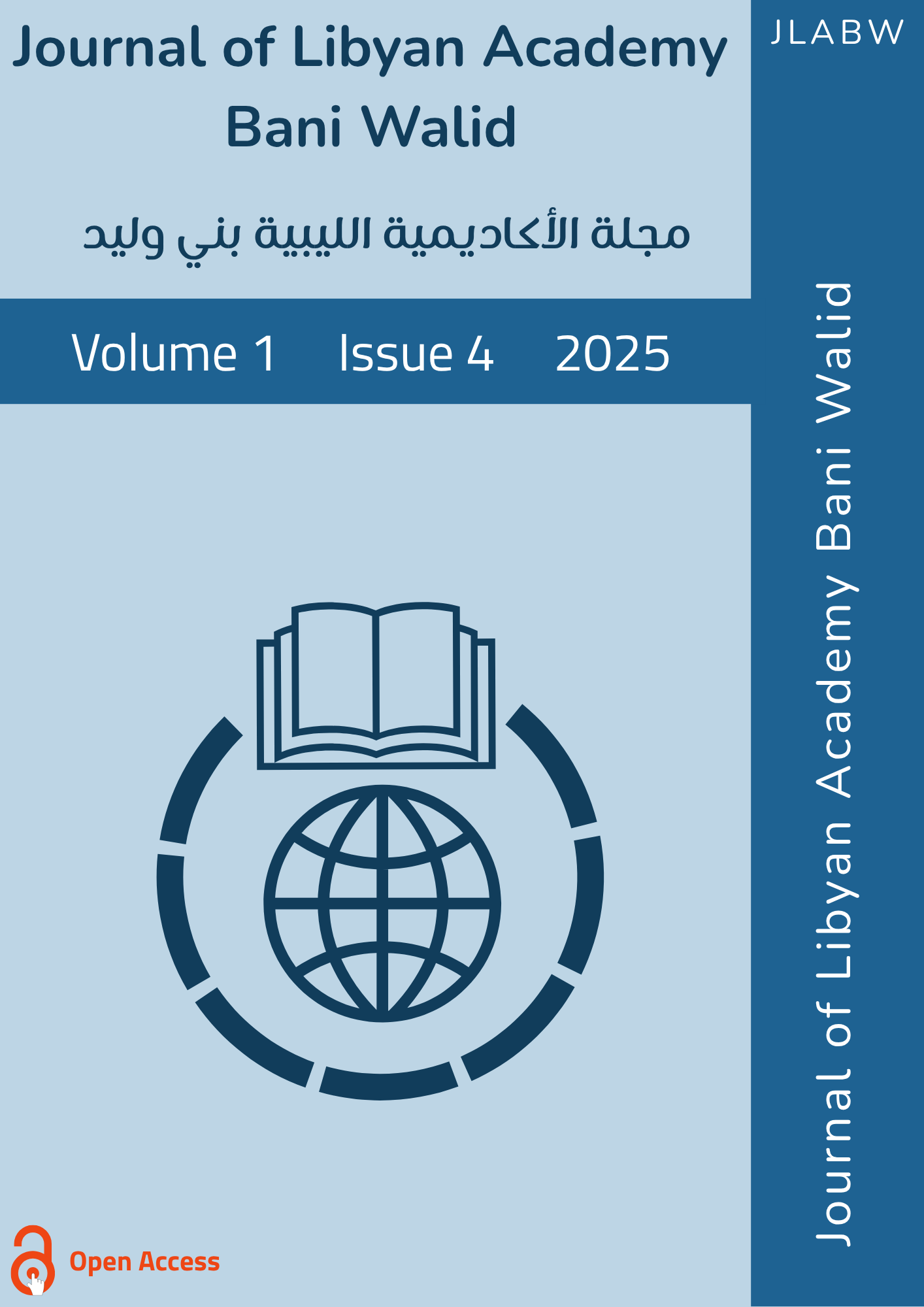Random urbanization and its impact on basic services in urban areas: a theoretical and analytical study
DOI:
https://doi.org/10.61952/jlabw.v1i4.243Keywords:
informal urbanization,urban planning, ,basic services, population growth, spatial justice, sustainable urban developmentAbstract
Random urbanization is one of the most prominent geographical and social phenomena that has imposed itself strongly on the reality of contemporary cities, especially in developing countries that have witnessed rapid and unbalanced urbanization rates in recent decades. This unplanned urban expansion has led to the emergence of marginal residential areas that lack minimum basic services and infrastructure, which has negatively affected the quality of urban life and created a clear imbalance in the spatial and social balance within cities.
This theoretical and analytical study aims to address the phenomenon of random urbanization from a comprehensive human geographical perspective, by analyzing the factors causing it and explaining its effects on public services, with a focus on urbanization patterns in Arab cities in general, and Libyan cities in particular, as a realistic model of developing cities facing increasing challenges in managing urban growth.
The study relied on a descriptive analytical approach based on a review of geographical literature, international reports (such as United Nations reports), and relevant field studies, to explain the interrelationship between informal urbanization and poor basic services, and to clarify the dimensions of the social, economic, and environmental phenomenon. The results of the analysis showed that random urbanization is not just a chaotic urban phenomenon, but rather represents a reflection of the failure of urban and population planning policies, the absence of justice in the distribution of resources and services, weak local governance, and the lack of cities' mechanisms to absorb continuous population growth.
It has also been shown that indiscriminate expansion leads to significant pressure on urban infrastructure, especially in the areas of water, sanitation, electricity, public transportation, education, and health. This results in a deterioration in the quality of urban life, widespread spatial poverty, and the emergence of clear geographical disparities between formal neighborhoods and slum areas. The study indicated that this phenomenon is characterized by continuity and renewal as a result of the complex interaction between economic factors (such as poverty and high land prices), demographic factors (such as population increase and internal migration), political factors (such as weak oversight and legislation), and environmental factors (such as the deterioration of agricultural land and its use for housing purposes).
References
المراجع:
القطعاني، صبريه حمد جمعة. (2025). التمدن العشوائي وأثره على الخدمات الأساسية في المناطق الحضرية: دراسة نظرية تحليلية. مجلة الأكاديمية الليبية بني وليد، 1(3)، 153–164.
خليفة، أحمد. (2023). أثر النمو الحضري غير المخطط على الخدمات العامة في مدينة طرابلس. مجلة جامعة سبها للعلوم الإنسانية، 18(2)، 44–65.
المرغني، عائشة. (2023). التمدن غير المخطط وتحديات الخدمات في مدينة بنغازي. مجلة دراسات جغرافية، جامعة بنغازي، 12(1)، 91–112.
عبد الرحمن، منى. (2019). التحضر غير الرسمي وتقديم الخدمات في أطراف القاهرة الكبرى. المجلة الجغرافية المصرية، 55(4)، 201–226.
البوعناني، عبد الكريم. (2020). ترقية الأحياء العشوائية في الدار البيضاء: نحو عدالة مكانية مستدامة. مجلة الجغرافيا والتنمية، 10(3)، 122–147.
بن سالم، إيناس. (2021). الإسكان غير الرسمي والتفاوت المكاني في تونس الكبرى. المجلة التونسية للتنمية المكانية، 8(2)، 65–88.
العزاوي، إبراهيم. (2024). التمدن غير الرسمي وتحديات الخدمات الأساسية في المدن ما بعد النزاعات: حالة الموصل. مجلة جامعة بغداد للعلوم الإنسانية، 42(1)، 55–78.
حمدان، عبد الهادي. (2020). التحضر السريع وإشكالية العدالة المكانية في المدن العربية. المجلة العربية للعلوم الاجتماعية، 6(1)، 33–57.
النعيمي، فاطمة. (2022). تأثير العوامل الاقتصادية والديموغرافية على التوسع العشوائي في المدن العربية. مجلة البحوث الجغرافية، جامعة عمان العربية، 5(2)، 71–93.
Atkinson, C. (2024). Inforal Settlements: A New Understanding for Research and Policy. Urban Studies Review, 61(2), 210–235.
Odu, J. (2018). Urban Poverty and Service Deprivation in Lagos Informal Settlements. African Journal of Urban Development, 7(3), 145–170.
Mutiyambizi, C., & Moyo, L. (2020). Access to and Satisfaction with Basic Services in Informal Settlements. South African Journal of Human Geography, 54(4), 365–392.
Kafish, M. S. (2021). Quality of Life in Informal Settlements: Basic Sanitation as a Luxury. Indian Journal of Urban Affairs, 15(1), 22–47.
Rawi, S. (2020). Spatial Planning, Informal Settlements and Service Delivery in South Asian Cities. Journal of Regional and Urban Planning, 19(3), 101–126.
Agyabeng, A. (2022). Informal Settlement and Urban Development Discourse in Jakarta. Urban Policy Forum, 33(2), 99–118.
Martinez, F. (2021). Urban Informality and Access to Public Services in Latin American Cities. Latin American Urban Review, 12(1), 55–79.
Otieno, G. (2022). Informal Urban Growth and Infrastructure Deficiency in Greater Nairobi. East African Journal of Geography, 8(2), 87–110.
UN-Habitat. (2023). World Cities Report 2023: Envisioning the Future of Cities. Nairobi: United Nations Human Settlements Programme.






